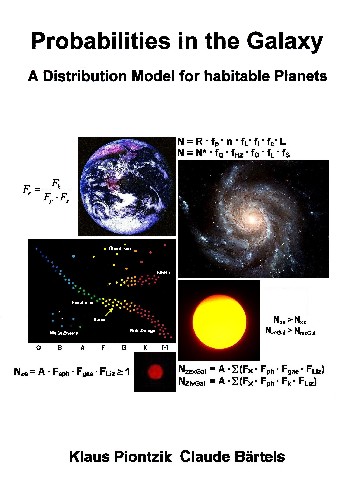| In 2001, the concept of a
habitable zone in which life and life on Earth can
develop was extended to galaxies. [3] Originally, the concept of the galactic habitable zone referred to the chemical evolution of a galactic region, according to which there must be enough heavy elements in a region of a galaxy to create life. Most elements with larger atomic numbers than lithium are formed over time by nuclear fusion processes that take place inside the stars. When the stars die, these elements are released into interstellar space. This nucleosynthesis takes place faster in the inner regions of a galaxy than in the outer regions. This led to the assumption of a maximum radius of the galactic habitable zone. In the course of time, the area should increase towards the outside. These parameters are on the one hand very uncertain, on the other hand one can also question the premise to couple "life" with the star formation rate. So it may well be possible that the entire outer Milky Way is habitable. [4] In the inner regions of a galaxy, the nucleosynthesis in which the heavy elements are produced is faster than in the outer regions. Supernova explosions take place preferably in regions with active star formation, i.e. mainly in the spherical center of a galaxy.. If a star with a planet is too close to a supernova explosion disturbs the atmosphere of the planet to such an extent that the planet is exposed to strong cosmic radiation that life could develop there permanently. [5] For spiral galaxies, such as the Milky Way, the supernova rate rises to the inner region of a galaxy. Therefore, an inner radius of the galactic habitable zone can also be specified here. The inner region of the galaxy accounts for about 8.5% of the volume of the galaxy. Since the star density here is higher than in the outer regions, one can assume that about 10 - 15 % of all stars are here. In this study, a maximum bandwidth of 100-300 billion stars is expected in the galaxy. This number would have to be corrected by the factor FGZ = 0,8 – 0,9 to take the star density in the inner region into account. With 100 - 300 billion stars, however, the factor 0.8 or 0.9 does not play a significant role. It is already included in the error tolerance of the bandwidth of the number of stars of this maximum observation. Overall, the concept of a galactic habitable zone can therefore be neglected in this study. If in the future (according to sentence 6.1.2 in about 200 years) an empirical allocation of all data will be possible, the concept of the galactic habitable zone can also be included again. |

|
176 sides, of them 64 in Color 76 pictures 11 tables Production and publishing: Books on Demand GmbH, Norderstedt ISBN 9-783-7528-5524-1 Price: 22 Euro |
|